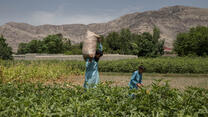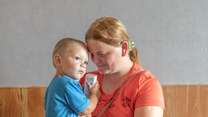As Syria marks 13 years of conflict, humanitarian needs have never been higher. The 2024 Humanitarian Needs Overview (HNO) estimates that 16.7 million individuals are in need of humanitarian assistance across the country. The socio-economic situation continues to deteriorate at the same time that humanitarian funding is reducing, resulting in a further breakdown in access to services and livelihoods. This was only further compounded by the February 2023 earthquakes and increase in conflict in late 2023, amplifying vulnerabilities, displacing households yet again, increasing negative coping mechanisms and millions of individuals unable to meet their basic needs. In 2023, the International Rescue Committee conducted a multi-sector needs assessment that aims to contribute to a better understanding of the specific humanitarian needs across northern Syria, with a focus on its operational sectors: Protection, Health, Education and Economic Wellbeing.
Several key protection needs were identified through the MSNA. 74% of respondents reported that they had faced at least one safety issue during the past 90 days. Of these, 21% reported physical and logistic constraints preventing mobility; 20% reported safety or security concerns related to displacement; 17% reported safety or security concerns related to the conflict. In addition, households reported signs of psychosocial distress (such as nightmares, lasting sadness, extreme fatigue, and being frequently tearful or anxious) among members within their house (17% women, 13% men, 12% girls and 12% boys).
There is a high need for health support especially in northeast (NES) where public health options are limited. In NES, the majority of people (47%) turn to pharmacies as the first option when they require medical attention compared with 50% of NWS who turn to public health facilities. Additionally, 14% of households mentioned medical needs as their greatest unmet need. At least one household member suffers from a chronic illness in 22% of households (15% in NES and 28% in NWS), with only 34% reporting ability to find the necessary medication consistently. Mental health access across northern Syria is reported by 82% of households; 17% of households mentioned at least one family member experiencing stress.
Access to education remains an issue of concern for households in northern Syria with 6% of households mentioning education for their children as their greatest unmet need. Of respondents missing civil documents, 30% said that they are having difficulty accessing education. For children who are out of school, the main reason was participation in child labor, which was reported to be more prevalent in NES (46%) than NWS (25%). Respondents also flagged economic reasons and lack of teaching quality as major barriers to children being enrolled in school regularly. The largest factor reported as impeding children’s learning acquisition is mental health (46%). 71% of respondents reported that caregivers are able to support their children’s education at home, with illiteracy as the major reason that caregivers are not able to support.
Initial findings in the economic wellbeing sector show high needs across northern Syria. Food security is a major concern with 59% of respondents mentioned that food or money to pay for food is the greatest unmet need; 60% of households were reportedly buying their food on credit/debt. The prevalence of debt remains high with 86% of respondents reported that they are in debt to another party. Of those, 91% said they are not able to pay off the debt. This included a significant increase in debt in NES compared to 2023 data. The main challenge for households accessing food is reported to be high food prices (41%) and a lack of money to buy food (36%). Households are also engaging in negative coping mechanisms, including 26% who borrow food or rely on help from relatives or friends and 15% who are reducing the number of meals that they eat in a day.



